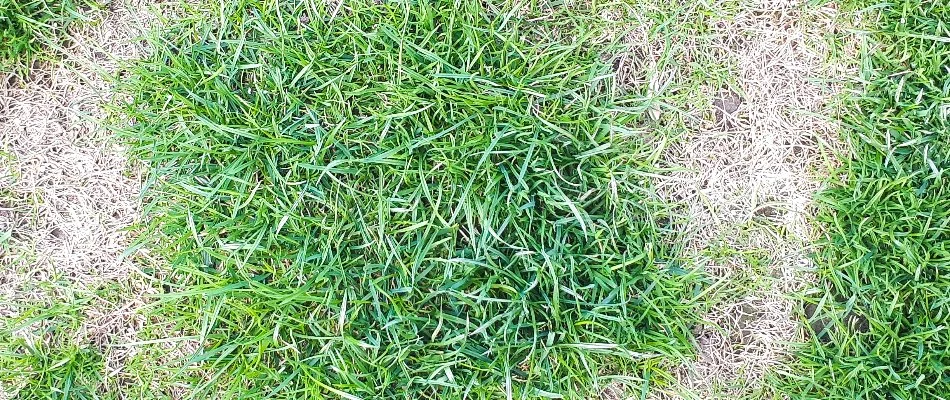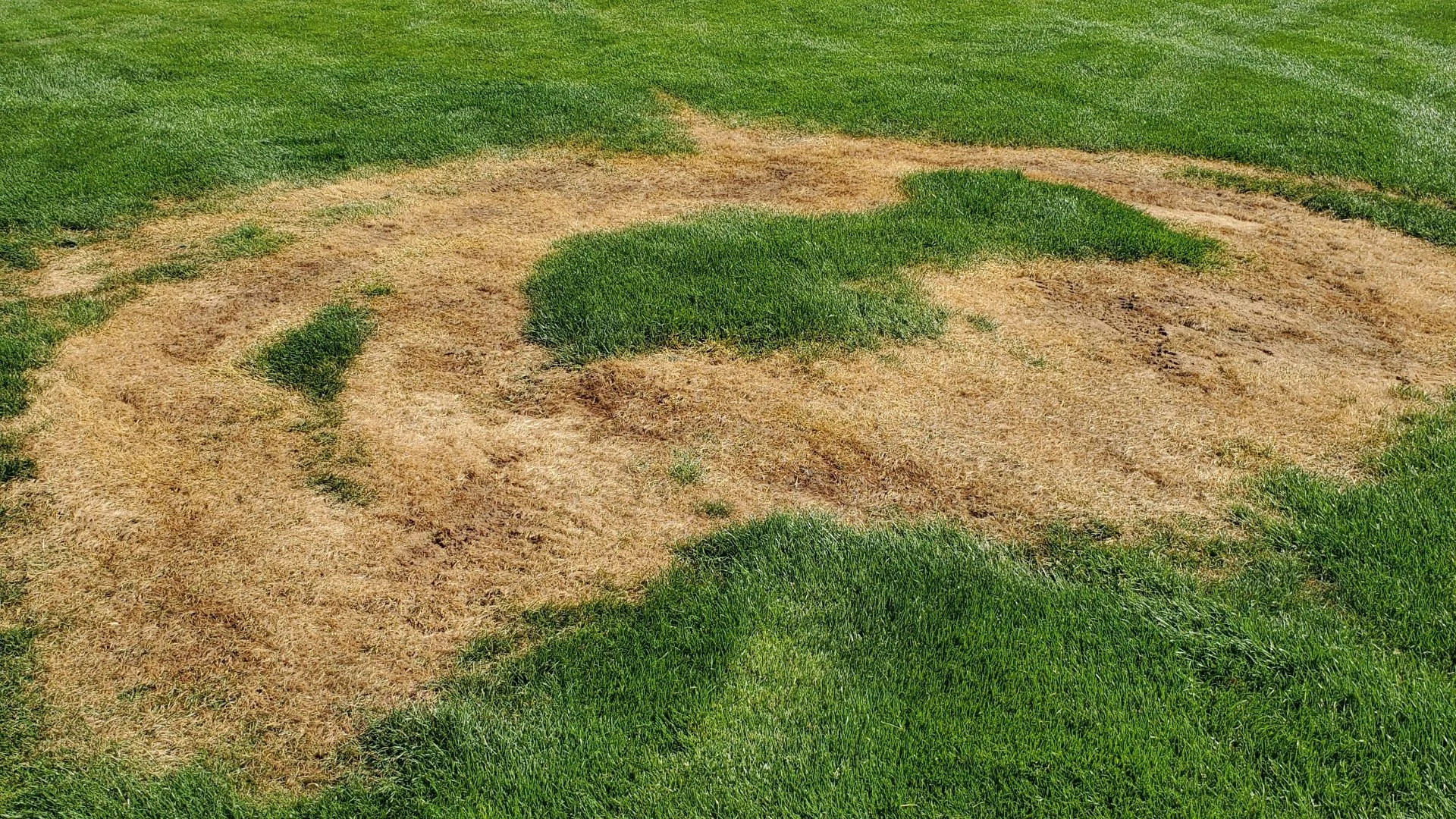There are several common lawn diseases in Grand Junction, CO, that could affect your turf if the conditions are right! Necrotic ring spot is a fungal disease that stops your turf from absorbing water effectively and will create patches of straw-like grass on your lawn before possibly killing the turf. Brown patch is a type of fungus that results in brown, circular patches on your lawn that can grow to several feet in diameter as grass blades dry out and eventually die. Ascochyta leaf blight is a lawn disease that causes yellow lesions to appear on blades of grass in the early stages, eventually transitioning to white before dying. Each of these common lawn diseases negatively affects your turf, so it's best to keep an eye out for them in order to protect your lawn!
Necrotic ring spot prevents your turf from absorbing water properly.

When your lawn is subjected to cool, wet conditions, it might be at risk for necrotic ring spot! This lawn disease is a fungal infection of the root system and makes it difficult for the grass to absorb water. It thrives in compacted soil, especially when temperatures are between 60-75 degrees Fahrenheit, and the heat of summer and drought can intensify its symptoms. Some common symptoms of necrotic ring spot are light, green spots on your turf, which eventually grow into large patches ranging in size from about 1 to 3 feet. The infected grass will turn reddish brown or bronze before resembling straw surrounding a small patch of new grass growth. If left untreated, it's possible for your turf to die, leaving a depression in your lawn where the infection was.
Brown patch causes brown, circular patches of infected turf.
Extended periods of hot, humid weather might leave your lawn more susceptible to brown patch! Brown patch is a type of fungus that can cause small patches of gray cotton to grow on your turf. This disease often develops when the grass is wet for 10 hours or more while temperatures at night are above 70 degrees Fahrenheit with daytime temperatures above 90 degrees Fahrenheit. The symptoms can be intensified in areas of shade and when there's poor soil drainage paired with over-watering. Some typical symptoms you might see are brown, tan, or orange circular patches of turf with a dark brown border. These patches can range in size from about 6 inches to several feet. Grass blades affected by brown patch will eventually dry out, turn brown, and possibly die.
Ascochyta leaf blight can cause your turf to turn white.
Ascochyta leaf blight is a lawn disease that commonly affects lawns in the Grand Junction, CO, area. This lawn disease causes yellow lesions on your grass when in the early stages and often resembles frost injury or drought stress. Your turf is at a higher risk of Ascochyta leaf blight when in a shaded area with extended periods of wetness. Cool to moderate temperatures intensify its growth as dew and water won't dry as quickly and if the disease is allowed to progress, the grass will eventually turn white and die.
Reach out to us today to schedule our lawn disease control service.
If you believe your lawn might be a victim of one of these common lawn diseases, don't worry! At Mesa Turf Masters, we provide curative treatments that will eliminate the disease and a recovery application to help bring the lawn back to good health. We offer our lawn disease control service to property owners in the Greater Grand Junction Area, including Grand Junction, CO, and other surrounding cities, such as Fruita and Palisade. Reach out to us today at (970) 434-5440 to sign up!



Comments (0)
Thanks for your comment!
Thanks for your feedback! Your comments have been successfully submitted! Please note, all comments require admin approval prior to display.
Error submitting comment!
There is a problem with your comment, please see below and try again.